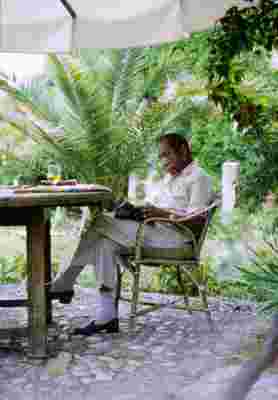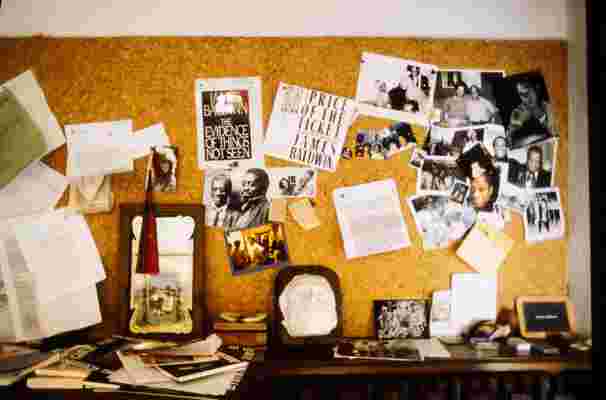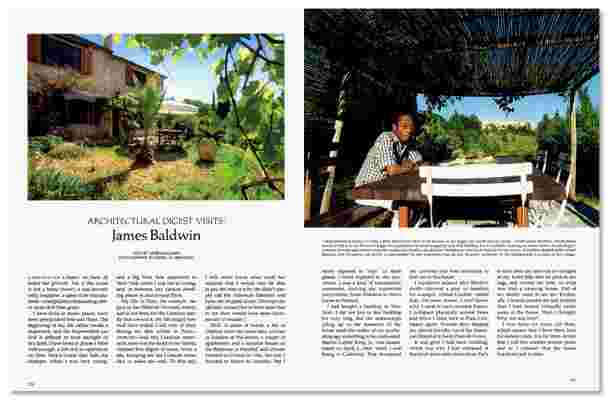Writer James Baldwin Found Solace in the South of France
His smile was a trap,” French photographer Daniel Minassian recalls of the expat American writer James Baldwin. “Male or female, homosexual or not, you just loved him. But he was extremely tormented.” One of the torments that afflicted his friend’s life was the death of Martin Luther King Jr., in 1968. “That devastated my universe and was ultimately to lead me to this house,” Baldwin wrote in an essay about his home in France for the August 1987 issue of AD, for which Minassian provided the images.

Baldwin on the terrace outside his study.
The Harlem-born Baldwin had already been mostly living abroad since the 1940s, far from America’s racism, classism, and homophobia, but the globe-trotting author of Giovanni’s Room and Notes of a Native Son did not have an anchor address until a friend, actress Simone Signoret, led the grieving Baldwin to the 17th-century bastide in Saint-Paul-de-Vence where he would live until his death at age 63, four months after the AD essay had been published.

Personal photos and book jackets were tacked to writer James Baldwin’s bulletin board in the South of France.

AD ’s August 1987 feature about Baldwin’s house.
After initially renting a basement apartment, he acquired additional space, room by room, outfitting it with Provençal furniture and humble textiles. It was also, he wrote, “a very old house, which means there is always something in need of repair or renewal or burial.” That meant personal work, too: In Baldwin’s study—a room that artist Georges Braque had once used as a studio—he could start chapters or toss them, ponder ideas or abandon them. At the time of his death from stomach cancer, Baldwin was working on several projects, including Remember This House, an unfinished memoir of civil rights leaders he had known.
Provençal antiques and art by friends furnished the living room.
“I would have loved to see his space and channel what he was thinking and use it to ignite my own creativity,” Malene Barnett, founder of the Black Artists + Designers Guild, says after learning that a developer erected a luxury apartment complex—ironically called Le Jardin des Arts—on the site of the house a few years ago. “It’s so crucial to carve out that space, a place where you can work without being distracted, to have that freedom. He had to find the space to tell the story of my people."